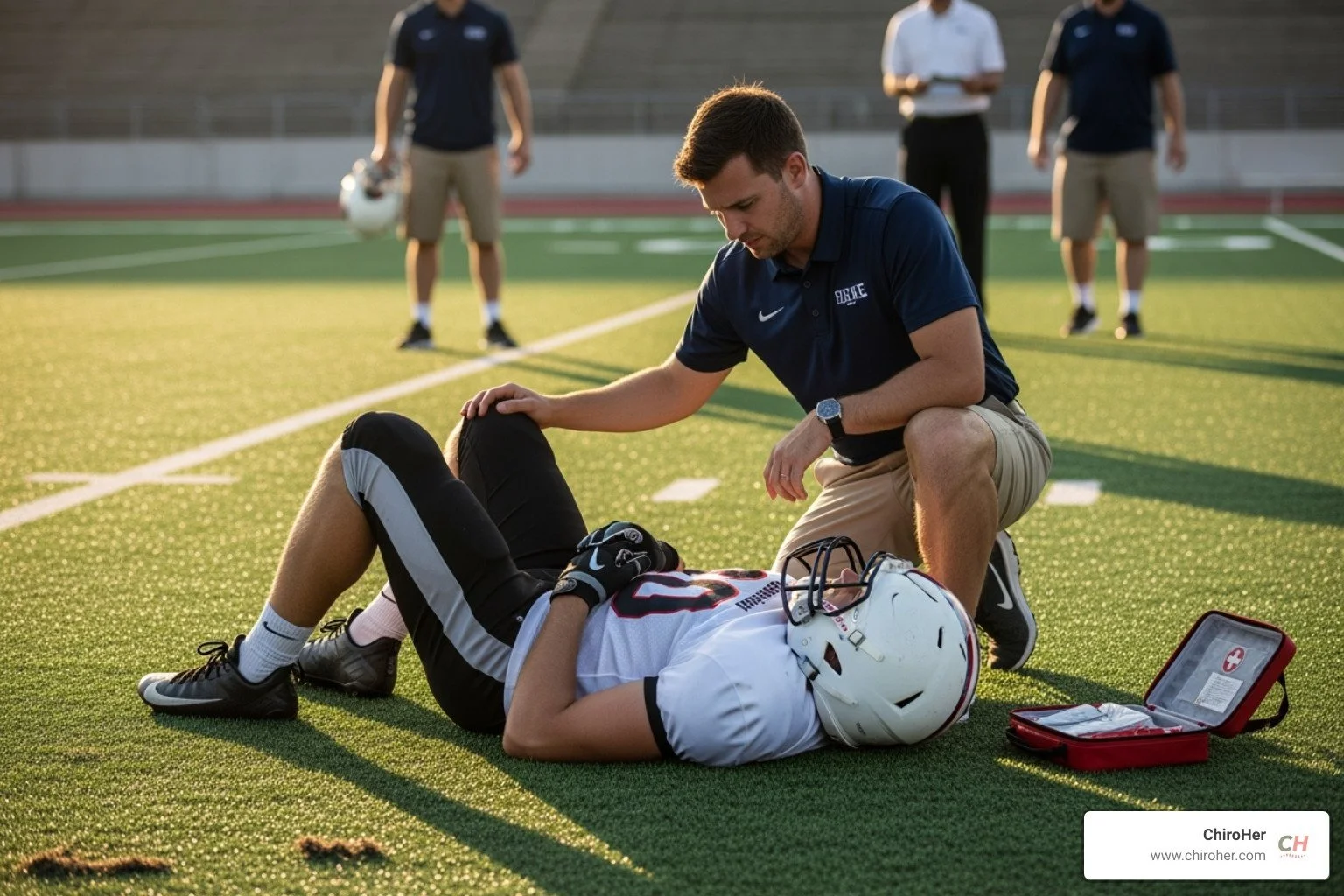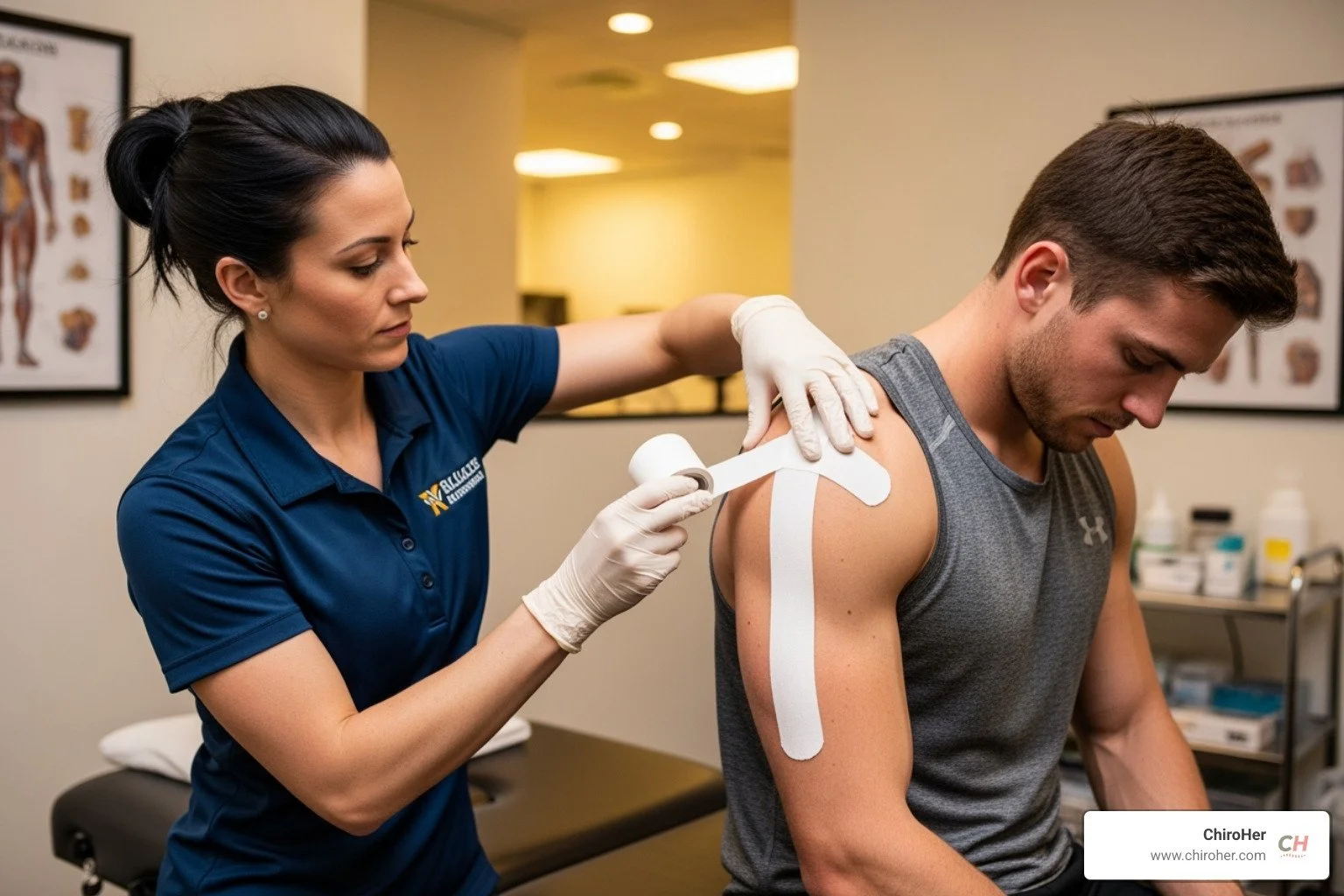Sports That Hurt the Most – Which One Tops the Injury List?
Understanding Sports Injury Risk
When we talk about what is the most injury prone sport, the answer isn't simple. The risk depends on how you measure it. Do you count the total number of injuries, or the rate of injuries per hour of play? Both metrics offer important insights into sports safety.
Here's a quick look at sports with high injury numbers based on different measurements:
By Total Injuries (2020 U.S. Data): These sports have the most reported injuries, often due to high participation.
Bicycling: 425,910 injuries
Using Exercise Equipment: 377,939 injuries
Basketball: 214,847 injuries
By Injury Rate (Per Participant/Exposure): These sports carry a high risk of injury each time an athlete plays.
American Football (Collegiate): 35.9 injuries per 1,000 athlete-exposures
BMX Cycling (Olympic): 34.38% injury rate
Taekwondo (Olympic): 29.92% injury rate
Sports offer great benefits, but almost all come with some risk. Understanding these risks helps us play smarter and safer. This article will explore which sports top the injury lists and what you can do to protect yourself.
Hi! I'm Dr. Michelle Andrews, founder of ChiroHer. With years of experience working with hundreds of athletes, I'm passionate about enhancing performance, preventing injuries, and expediting recovery, especially when it comes to understanding what is the most injury prone sport.
By the Numbers: Which Sports Cause the Most Injuries Overall?
When people ask what is the most injury prone sport, they often think about which activities send the most people to the emergency room. Sometimes a sport tops the charts not because it's uniquely dangerous, but because millions of people participate.
The National Safety Council data on sports injuries shows which activities consistently lead to emergency room visits. These aren't necessarily the most dangerous sports, just the ones that, due to popularity, result in a high volume of injuries. Youth sports injuries follow similar patterns, a trend we see in our practice and discuss in our Sports Injury blog.
1. Bicycling and Exercise Equipment
Surprisingly, bicycling topped the injury charts in 2020 with 425,910 injuries, followed by exercise equipment at 377,939 injuries. Your home gym can be as risky as a contact sport when looking at total numbers.
Bicycling injuries often involve falls from hitting potholes or collisions with cars. Common injuries include fractures (collarbones, arms, wrists) and head injuries. Helmets are crucial but can't prevent every injury.
Exercise equipment injuries frequently happen from incorrect use, lifting too much weight, or poor form. Treadmill falls and muscle strains from free weights are common. We often treat overuse injuries from workouts and emphasize Therapeutic Exercises that focus on proper movement to prevent them.
2. Basketball
Basketball is a high-impact sport that demands quick direction changes and frequent jumping. In 2020, it accounted for 214,847 injuries. The numbers are especially high for young athletes, with over 170,000 children aged 5 to 14 needing emergency room treatment in 2009 for basketball-related injuries.
Ankle sprains are the most common injury due to constant jumping, landing, and cutting.
Knee injuries, like ACL tears, can occur during quick pivots or awkward landings.
Finger fractures and dislocations happen from catching passes or blocking shots.
If you're dealing with joint pain from basketball, working with a Chiropractor for Joint Pain can help you recover faster.
3. Soccer
Soccer's global popularity translates to a high volume of injuries. In 2020, it accounted for 81,452 injuries in the U.S. For younger players, about 88,000 children aged 5 to 14 needed emergency room care for soccer injuries in 2009.
Lower extremity injuries like ankle sprains, knee strains, and hamstring pulls are dominant. Understanding the Difference Between Sprains and Strains is important for recovery.
Collisions between players can lead to bruises and more serious issues.
Head injuries from heading the ball have raised concerns about concussions, especially among youth players.
What is the Most Injury Prone Sport Based on Risk Rate?
Let's shift from total numbers to the risk you face each time you play. When we examine what is the most injury prone sport based on injury rates, we look at the likelihood of getting hurt per game or practice. This paints a different picture, where contact sports naturally lead.
Researchers measure injury rates using "athlete-exposures," which is each time an athlete participates in a practice or game. The Epidemiology of Collegiate Injuries for 15 Sports provides solid data on these rates. Knowing these risks helps athletes make informed decisions. Many of these injuries are treatable, and you can learn more about how Can Chiropractors Treat Sports Injuries? in our guide.
1. American Football: A Closer Look at the Highest Risk
American football takes the top spot for injury rate. Collegiate football sees 35.9 injuries per 1,000 game exposures. Statistically, a college player is likely to experience at least one injury in a 28-game career.
The sport's design, with high-speed collisions, creates a high risk for injuries.
Concussions are a major concern due to impacts, and the risk remains significant despite new protocols. Understanding the difference between conditions like Whiplash vs. Concussion: What's the Difference? is important for players.
Ankle sprains and knee injuries, particularly ACL tears, are also very common due to quick cuts and tackles.
2. Ice Hockey and Rugby
Ice hockey and rugby are also high-risk sports, combining high-speed action with intense physical contact.
Ice hockey players move at high speeds on a hard surface, leading to 16.3 injuries per 1,000 game exposures for collegiate men. Lacerations from skates and shoulder injuries from checks are common, as are concussions.
Rugby involves continuous play with minimal padding. Statistics show one in four rugby players gets injured each season. Concussions from scrums and tackles are frequent, along with sprains and strains affecting nearly every joint. For these common issues, understanding Soft Tissue Injury recovery is key.
3. What is the most injury prone sport for severe outcomes?
Some sports stand out not for frequency, but for the severity of injuries when they occur.
Boxing's goal involves incapacitating an opponent, often through head trauma. This leads to deaths and long-term brain damage like CTE.
Horseback riding is a leading cause of sports-related concussions. Falls can result in traumatic brain injuries and spinal injuries. Jockeys face high rates of paralysis and death. These impacts can lead to issues like herniated discs, and learning Can Chiropractic Care Help with a Herniated Disc? can provide helpful recovery insights.
Common Aches and Pains: The Most Frequent Sports Injuries
No matter your sport, some body parts are more prone to injury. Understanding these common issues is the first step toward prevention and quick recovery.
Sports injuries range from simple sprains and strains to serious fractures and concussions. Over half of all collegiate sports injuries affect the lower body, with ankle ligament sprains making up about 15% of all injuries. At ChiroHer, we see a wide range of issues, from general Back Pain and Neck Pain to specific problems like tendonitis. If you're wondering if a Chiropractor vs. Massage for Tendonitis is right for you, we can help.
What is the most injury prone sport for your knees and ankles?
When we look at what is the most injury prone sport for knees and ankles, basketball and soccer stand out. The constant pivoting, jumping, and sudden stops put immense stress on these joints.
Knee injuries include ACL tears, meniscus tears, and patellar tendonitis (jumper's knee). While ACL tears are less frequent, they often require surgery and long recovery.
Ankle sprains are one of the most common injuries across almost every sport due to running and quick side-to-side movements.
Proper footwear, warm-ups, and strengthening exercises are vital for protecting these joints. If you deal with issues like shin splints, you might find our insights on Can Chiropractors Help with Shin Splints? helpful.
Head Injuries Across Different Sports
Head injuries, especially concussions, are a major concern in many sports, not just football and ice hockey.
Contact sports like football and hockey have high concussion rates from player collisions. Helmets prevent skull fractures but can't eliminate concussions.
Soccer carries a risk from heading the ball and accidental head-to-head clashes.
Horseback riding is a leading cause of serious head injuries and sports-related concussions due to the height and force of falls.
Other activities like bicycling, skateboarding, and skating account for nearly half of all head injuries in children during recreation.
Protective gear and following strict concussion protocols are critical for athlete safety. If you're dealing with a muscle injury, our article on What Can a Chiropractor Do for a Torn Muscle? might offer some good insights.
Proactive and Protective: How to Reduce Your Injury Risk
While no sport is risk-free, you can use many effective strategies to protect your body and recover faster if an injury occurs. Prevention is always better than cure.
Building a resilient foundation for your body is key. Here are some proactive steps:
Warm-ups and Cool-downs: Prepare your muscles for action and help them wind down afterward to improve flexibility and prevent stiffness.
Conditioning and Strength Training: A strong, well-conditioned body is better equipped to handle the stresses of sport.
Protective Equipment: Helmets, pads, and mouthguards are fundamental in contact sports. Supportive gear like Supportive Taping can add stability to vulnerable joints.
Proper Technique: Using the correct form for movements, tackles, or jumps can prevent many common injuries.
Adequate Rest: Your body needs rest to repair and rebuild. Overtraining is a common cause of overuse injuries.
Sports organizations also play a role by enforcing rules that prioritize player safety. We cover more of these topics in our discussions on Sport Injury and Rehabilitation.
The Role of Chiropractic Care in Athletic Performance and Recovery
At ChiroHer, we see chiropractic care as a game-changer for athletes. It's about helping your body perform at its best to prevent injuries and speed up recovery.
Our approach focuses on optimizing your body's mechanics. Regular adjustments help ensure your spine is aligned and your joints move freely. When your body's biomechanics are improved, there is less stress on muscles and ligaments, which can lead to better range of motion and flexibility.
Chiropractic care can also help manage pain from a new injury or a chronic ache. By addressing the root cause of discomfort and supporting your nervous system, we can help speed up your recovery. We often use complementary techniques like Electric Muscle Stimulation as part of a personalized plan. Learn more in our article: How Chiropractic Can Help with Sports Injury Recovery.
Our patient-focused care at ChiroHer is here for athletes of all levels. We provide personalized chiropractic, acupuncture, and holistic wellness services to individuals in Oklahoma City, Yukon, Edmond, Nichols Hills, Del City, Mustang, and Moore. For personalized care, explore our Chiropractic Care services.
Frequently Asked Questions about Sports Injuries
Do more injuries happen in games or practices?
The answer might surprise you. Collegiate injury rates are 3.5 times higher in games (13.8 injuries per 1,000 athlete-exposures) than in practices (4.0 per 1,000). The intensity, speed, and competitive atmosphere of games lead to riskier situations.
However, because athletes spend much more time practicing, 62% of all organized sports injuries happen during practice. This is especially true during preseason as players get back into shape. This highlights why proper conditioning and warm-ups are just as important in training as they are on game day.
Are contact sports always more dangerous than non-contact sports?
This gets to the heart of how we define "dangerous" when asking what is the most injury prone sport. It depends on your perspective.
Contact sports like football, rugby, and ice hockey have the highest injury rates per participant. The deliberate collisions mean your individual risk is higher each time you play.
Non-contact activities like bicycling and using exercise equipment often result in the highest total number of injuries. This is simply because millions more people participate in them.
So, while your personal risk is higher in a contact sport, more people end up in the ER from popular non-contact activities.
How can I tell if my sports injury is serious?
Knowing when to seek medical attention is crucial. While many injuries respond to rest and ice, some red flags should never be ignored.
Seek immediate medical attention if you experience:
Severe pain, swelling, or numbness.
Inability to put weight on a limb or move a joint.
A popping or crunching sound at the moment of injury.
Any visible deformity of a limb or joint.
Head injuries require extra caution. If a head impact results in confusion, memory loss, dizziness, nausea, or loss of consciousness, seek immediate medical care. These can be signs of a concussion or more serious brain injury. When in doubt, it's always best to get checked out by a healthcare professional.
This guide is for informational purposes and is not a substitute for already established medical advice from your healthcare provider.





